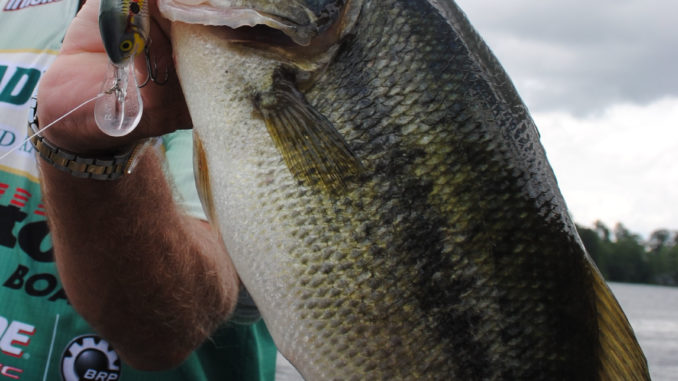
Summer tactics must include deep-diving plugs
I have written a lot in the past about fishing crankbaits, but mostly at other times of year, in early prespawn or during the fall when bass are in particularly good patterns to catch them with diving plugs.
But you can’t really talk about bass fishing during the summer without talking about crankbaits. It’s so hot across South Carolina that bass are almost always in deeper water, and crankbaits are a great tool for catching bass when they get out away from the bank.
I know I like to fish a lot at night in July and August, mostly because of all the recreational boating during the daytime, but if you can get out early, you can get in a few hours of really good fishing before the boat traffic gets bad, and those are great trips to have a crankbait tied on at least some of the rods you keep on your casting deck. It’s probably the first bait I turn to.
At this time of year, I’m no longer concentrating on the creek arms in our South Carolina reservoirs, I’m mostly fishing out on the main-river channels. I’ll fish the places where creeks intersect the main lake, but I’m not going back in them.
I love fishing on main-river channel ledges during the summer, either on the upper or lower end of the lake. Those are great places to catch fish in late June, July and through August.
Boat position means a lot. Most of the year, I’ve got my Phoenix bass boat in 10 to 15 feet of water, casting into shallower water. But now, I’ll have my boat out anywhere from 20 to 30 feet deep so I can fish the ledge where the bottom drops off the flat into the channel. With all the new mapping features on our electronics, you can find these places easily, but you can still find them using a good paper map and your depth finder.
What you’re looking for is changes in the bottom. That may be a place like the junction of a creek channel and the river channel, or it may be a little change in depth along the edge of the main-river channel. It can be a little depression where the bottom drops from 18 to 20 feet, or it can be a little hump or high spot where it comes up from 18 to 16 feet. The reason these little depth changes are so important is that they change the way the current flows, and fish will relate to a change in the current.
Most of our lakes, during the summer, they’re going to release water through the dam for at least three or four hours a day, and that’s going to set up a current. Even on the lower end of a big lake, where you can’t visually tell there’s any current, there will be enough water moving that the fish will react to it.
I’ll look for both fish and baitfish on my Humminbird electronics and hope I can find a combination of the two on one of these kinds of spots. The first thing I do when I find a spot that looks promising is pull out a deep-diving crankbait like a Rapala DT-20 in a shad or blueback herring color. I’ll fish it on a 7-foot, medium-action BPS Johnny Morris CarbonLite cranking rod with a BPS Johnny Morris Signature Series reel spooled with 10-pound XPS fluorocarbon. The light line and fluorocarbon will help get the bait down a little deeper.
I like to start out casting upstream and retrieving the bait back downstream; that’s the natural way baitfish swim. Even on the lower end where you can’t tell there’s current, it matters, even if it’s very slight. I won’t cast directly upstream, parallel to the ledge. I like to get at an angle, somewhere between parallel and 45 degrees, and set up there to cast. Now, if I’m confident that there are bass on a spot I’m targeting, but I can’t catch them casting from this angle, I’ll move all around to see if a little different casting angle will matter. I might set up in several different spots to fish the same little hump or depression.
I’ll have two more baits tied on along with the crankbaits. I like to use the crankbait as a search tool, and if I find them on a crankbait, I’ll keep casting until they quit biting. Then I’ll change to one of the other baits, or I’ll catch one or two on a bait and really settle down and fish a place thoroughly with either a 10-inch Yamamoto Kut-Tail worm in plum color, or a VMC Swinging Rugby Jig, which is a plain head that you can dress with a skirt or just a trailer. I’ll add a 5-inch Yamamoto Double Tail Hula Grub in plum color to a ½- or ¾-ounce head
With a crankbait and these other two baits, if you can find bass out on the main-river channel ledges, they’re probably going to hit one of these three baits.
So don’t put your tackle away because it’s hot. Yes, July and August are great times to be getting your deer stands all ready and getting all of your hunting gear ready, but a deep-diving crankbait can make for some great summer bass fishing.




Be the first to comment